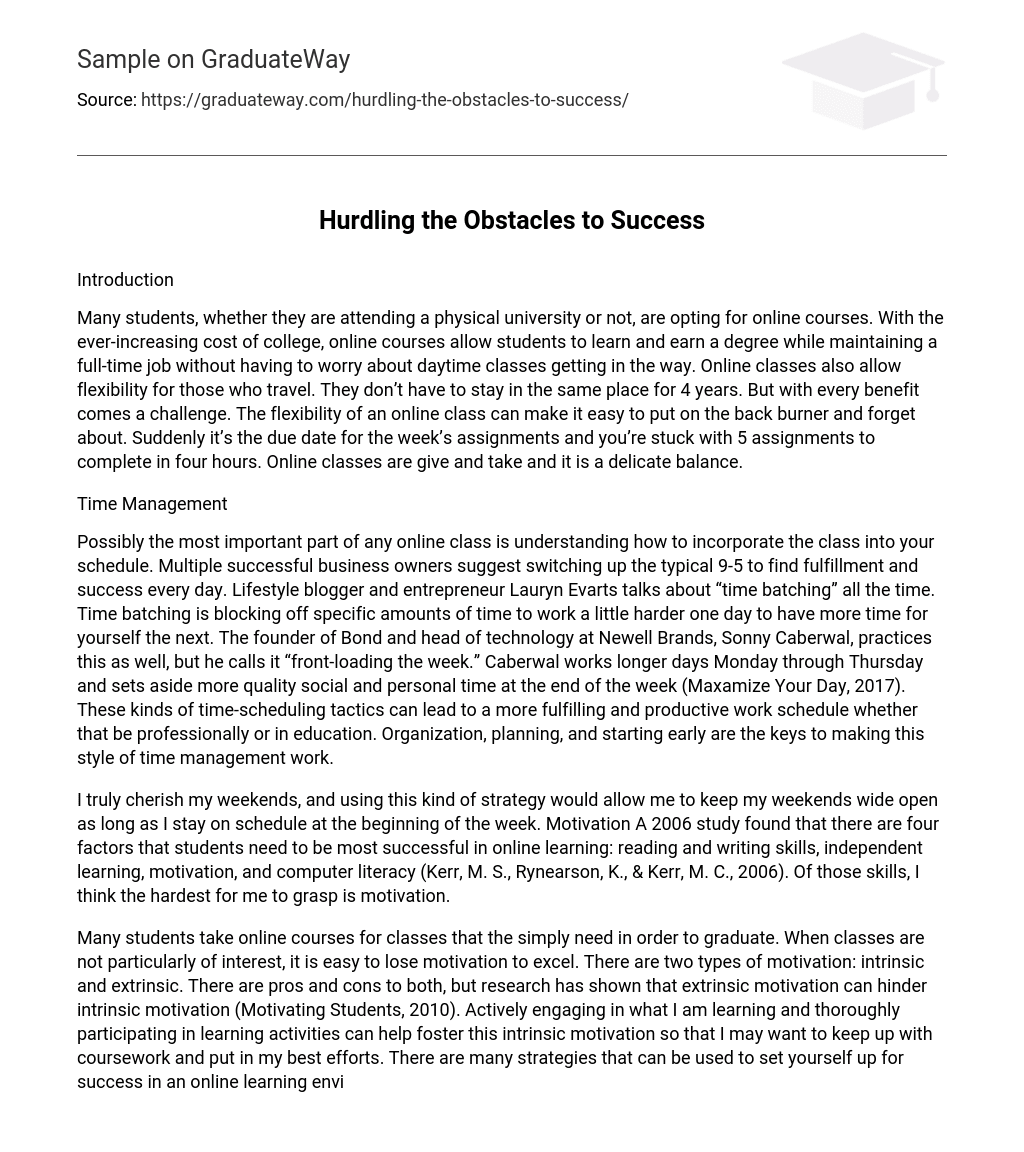Introduction
Many students, whether they are attending a physical university or not, are opting for online courses. With the ever-increasing cost of college, online courses allow students to learn and earn a degree while maintaining a full-time job without having to worry about daytime classes getting in the way. Online classes also allow flexibility for those who travel. They don’t have to stay in the same place for 4 years. But with every benefit comes a challenge. The flexibility of an online class can make it easy to put on the back burner and forget about. Suddenly it’s the due date for the week’s assignments and you’re stuck with 5 assignments to complete in four hours. Online classes are give and take and it is a delicate balance.
Time Management
Possibly the most important part of any online class is understanding how to incorporate the class into your schedule. Multiple successful business owners suggest switching up the typical 9-5 to find fulfillment and success every day. Lifestyle blogger and entrepreneur Lauryn Evarts talks about “time batching” all the time. Time batching is blocking off specific amounts of time to work a little harder one day to have more time for yourself the next. The founder of Bond and head of technology at Newell Brands, Sonny Caberwal, practices this as well, but he calls it “front-loading the week.” Caberwal works longer days Monday through Thursday and sets aside more quality social and personal time at the end of the week (Maxamize Your Day, 2017). These kinds of time-scheduling tactics can lead to a more fulfilling and productive work schedule whether that be professionally or in education. Organization, planning, and starting early are the keys to making this style of time management work.
I truly cherish my weekends, and using this kind of strategy would allow me to keep my weekends wide open as long as I stay on schedule at the beginning of the week. Motivation A 2006 study found that there are four factors that students need to be most successful in online learning: reading and writing skills, independent learning, motivation, and computer literacy (Kerr, M. S., Rynearson, K., & Kerr, M. C., 2006). Of those skills, I think the hardest for me to grasp is motivation.
Many students take online courses for classes that the simply need in order to graduate. When classes are not particularly of interest, it is easy to lose motivation to excel. There are two types of motivation: intrinsic and extrinsic. There are pros and cons to both, but research has shown that extrinsic motivation can hinder intrinsic motivation (Motivating Students, 2010). Actively engaging in what I am learning and thoroughly participating in learning activities can help foster this intrinsic motivation so that I may want to keep up with coursework and put in my best efforts. There are many strategies that can be used to set yourself up for success in an online learning environment. With so many potential obstacles it is important to set a plan for yourself to stay on top of things. Online courses can be overwhelming and a lot of work. Many students don’t realize this until they are in the thick of the class and starting to fall behind. It is important to make a schedule and stay ahead of the game.
Finding ways to stay interested in the content will help me keep up with my work and produce quality content. Developing a sense of internal motivation is the best way to stay engaged. The challenges for online learning are only that: challenges. They can be overcome, it just takes a little bit of organization, planning, focus, and motivation.
References
- Kerr, M. S., Rynearson, K., & Kerr, M. C. (2006). Student characteristics for online learning success. The Internet and Higher Education, 9(2), 91–105. https://doi.org/10.1016/j.iheduc.2006.03.002
- Maximize Your Day. (2017). Entrepreneur, 45(6), 42-52. Motivating Students. (2010). Retrieved May 20, 2018, from https://wp0.vanderbilt.edu/cft/guides-sub-pages/motivating-students/





